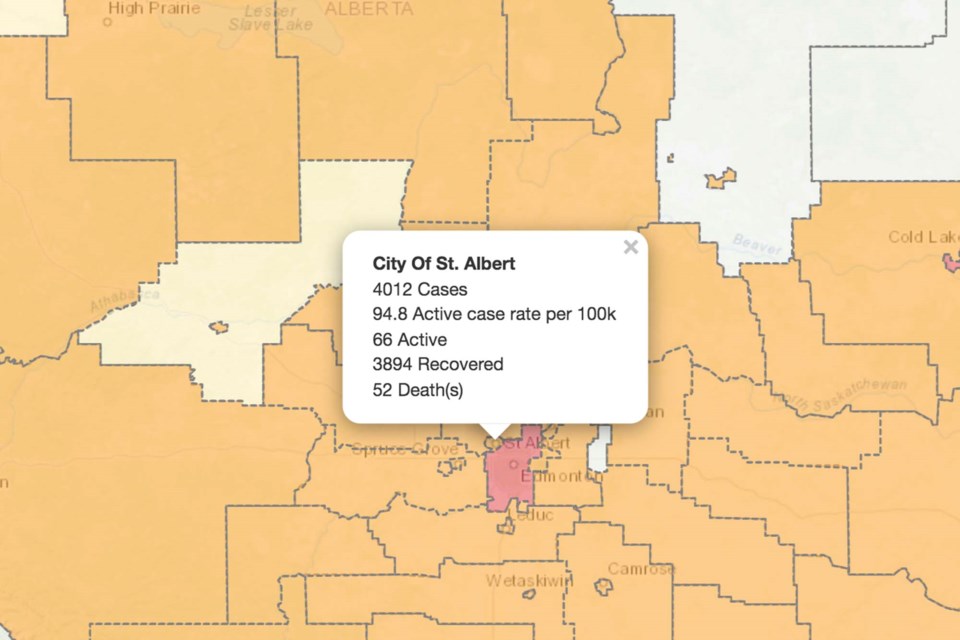COVID-19 numbers across the province might be slowing but as the weather gets colder and people head indoors for activities, that could change.
“Over the past few weeks, we have begun to come down the other side of the fourth wave. We have seen before how fast things can change. I would like to remind Albertans that we must stay vigilant especially as temperatures drop as we head into winter,” said. Dr. Deena Hinshaw, chief medical officer of health.
During a Nov. 16 COVID update Hinshaw reminded people to stay vigilant even as COVID cases slow.
Vigilance is important for two reasons, she said. The first being that, as we move indoors, the risk of COVID transmission increases.
In response to a reporter’s question about a fifth COVID wave during the winter, Hinshaw said transmission increases when people who are infectious come into contact with people who are susceptible to the virus. The more contacts people have, especially in indoor locations, the greater the risk of transmission.
“So, with still having people in the community who are susceptible to the virus with the very aggressive nature and high transmission potential of the Delta variant, and with the seasonality of the virus, people moving inside and having that increased risk in indoor settings. There is a risk that we could see a fifth wave,” she said.
Ways to minimize that risk include staying home when sick, washing hands regularly, and being vaccinated against COVID-19, and influenza.
“The more of us that participate in [those] multi-layers of protection, the less the chance of a fifth wave that could increase the strain on our health-care system this winter,” she said.
Data from the province, current as of Nov. 14, shows there are 66 active COVID cases in St. Albert, while the province has 5,828 active cases of the virus.
The province is reporting 519 hospitalizations, with 100 of those people being in ICU.
Altogether, 3,188 people have died from the virus, with 52 of those people residing in St. Albert.
The second reason people must remain vigilant is because it is influenza season.
“We can expect a rise in the number of Albertans with respiratory symptoms and other illnesses including seasonal influenza,” she said.
Hinshaw said the uptake for influenza immunization has been slow so far this year. Across the province, 20.7 per cent of people have been immunized against influenza, while 32.1 per cent of St. Albertans have gotten their influenza shot.
There have been three influenza cases overall in the province.
“While the flu is not as severe as COVID-19 it can be very serious for the very young and very elderly and it can put additional pressure on our health-care system,” she said.
Hinshaw also reminded Albertans QR codes as proof of vaccination came into effect on Monday.
“Albertans’ vaccine record must now include the QR code in order to enter any business or venue taking part in the program,” said Hinshaw.
Businesses and venues taking part in the Restrictions Exemption Program (REP) will need patrons to show the QR code or another form of valid vaccination record and a piece of valid ID that matches the name and birth date on the vaccine record for those age 18 and over.
Other valid forms of vaccination records include a Canadian Armed Forces vaccine record, first Nations immunization record, vaccine records issued by other provinces and territories, ArriveCan app for international travellers, negative privately-paid COVID-19 test taken within the previous 72 hours, or a valid proof of medical exemption.
On Tuesday, the province also announced a $2,000 Restrictions Exemption Program Implementation Grant. The funding is to help organizations offset implementation costs for the REP program.
The province has committed $20 million to the program.
Applications can be found online at: https://www.alberta.ca/restrictions-exemption-program-implementation-grant.aspx




